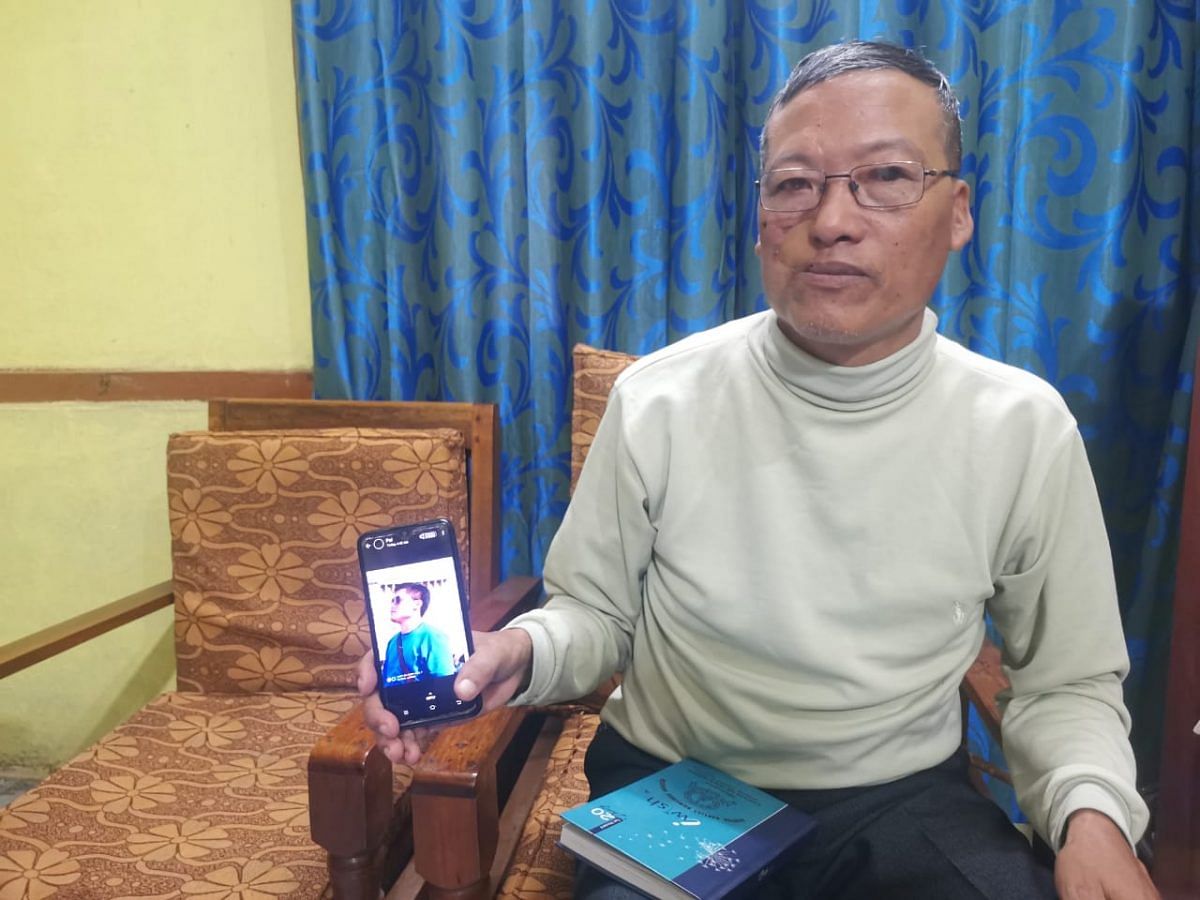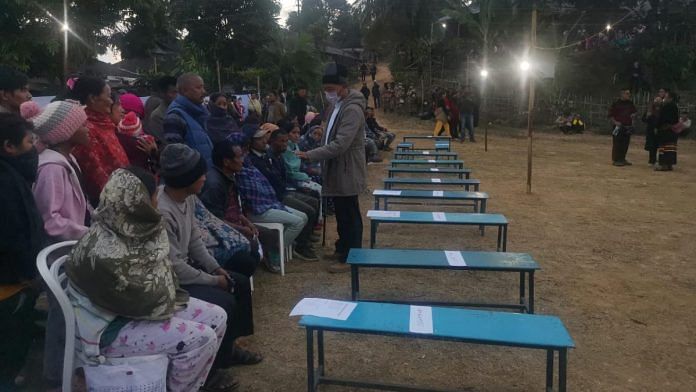Oting (Mon district): For nearly 15 years, it’s been an annual ritual for the residents of Oting village in the remote Mon district of Nagaland.
In the six-month period between October and April, hundreds from the village, which has a population of over 1,000 people, head to locally-owned coal mines, the closest of which are 5-6 km away, for a more substantial means of income.
The villagers live in accommodations close to the mines, only coming back Saturdays to attend Sunday morning mass.
That routine return turned deadly for six of them Saturday, when they were shot dead by personnel of the Army’s Para Special Forces unit, which had set up for an ambush on the road between Oting and the nearby village of Tiru. The Army unit had been acting on inputs about the possible movement of NSCN (K) militants in Mon district.
The botched security operation, however, has had bigger repercussions — it was followed by an alleged mob attack on the forces later at night, which resulted in the killing of one soldier and at least seven other civilians in “counter fire” by security personnel. Amid outrage in Nagaland, there are now calls for the repeal of the controversial Armed Forces Special Powers Act (AFSPA).
While the Army has admitted it was a case of “mistaken identity”, eyewitnesses told ThePrint that personnel on the ground attempted to hide the bodies and then opened indiscriminate fire again when confronted.
Home Minister Amit Shah, however, told the Lok Sabha Monday that after the first incident, when six civilians were killed, an angry crowd of local residents gathered and started attacking security personnel, following which they had to open fire “to disperse the crowd and defend themselves”.
Also read: ‘Dark day, head hung in shame’ — Nagaland deaths spark furore over AFSPA in Parliament
Sequence of events
The sun was just about setting at 4.30 pm when the Para Special Forces unit carried out its “ambush” on a route frequented by the miners.
According to an Army statement Saturday, the ambush had been set up “based on credible intelligence of likely movement of insurgents”. “A specific operation was planned to be conducted in the area of Tiru, Mon district,” the statement said.
Eyewitnesses told ThePrint that they were alarmed by the gunshots.
K. Yangom Wangnao, a 23-year-old resident, said he was standing close to a bridge near one of the mines when he heard the sounds of bullets. “I came back to Tiru to alert the public after which we went to Oting. When some people didn’t turn up, we went to look for them at the mine,” he said.
A second eyewitness, who said he was also near the mining area, told ThePrint that by the time several of the villagers went back to look for the miners, it was around 8 pm. The villagers say that when they reached the area, the bullet-ridden and damaged pickup truck, in which the miners were travelling, was lying on one side of the road.
“(At the time) we found the Army truck was trying to flee from the incident site. We chased them on bikes,” the eyewitness, who did not want to be named, said. “The Army personnel present told us that they were transporting the injured. I checked the vehicle and just touched it with my hands. That’s when I found the dead bodies.”
According to a report drafted by local administration officials on the incident, which has been accessed by ThePrint, the bodies were “under a tarpaulin” in a “Tata Mobile” pick-up.
Agitated, the 30-odd villagers who had gathered at the spot, set the “three” other vehicles belonging to the Para Special Forces unit — “a Bolero, a Scorpio and a Tata Winger” — ablaze, eyewitness statements and the official report quoted above indicated.
Local residents said when they attempted to carry out the bodies, the Army personnel started firing again for a second time.
Thaiwang Konyak, whose brother Yinjong Konyak was among the six killed in the “ambush”, said it had only been a week since Yinjong had started working at the mine. “I was scared when the Army personnel started firing again. Two more people were killed on the spot at that time,” he said.
Yangom alleged that it was the second round of firing that further provoked the villagers. “We started fighting them with daos (Naga knives),” he said.
According to Shah’s statement, however, the special forces had opened fire when the “local villagers surrounded the Army team, burnt two vehicles and assaulted them, resulting in the death of one Special Forces (SF) personnel and injuries to several others”.
The villagers claimed that the firing continued for some time leading to the deaths of five others. In all, seven civilians died in this round of firing. One more civilian died in a firing incident in Mon after a mob allegedly tried to vandalise the Assam Rifles camp at the district headquarters.
Of the 14 civilians killed, most belonged to Oting village. Another 14 were seriously injured while eight sustained minor injuries. Two of the eight miners who had initially been fired upon during the ambush are being treated at the Assam Medical College and Hospital in Dibrugarh.
‘We want justice’
On Monday, demands for justice rent the air at Oting village, which has borne the worst of the tragedy. The bodies of the 11 who had died were lined up in the village compound, Hahsahapang, waiting to be buried at the cemetery just metres away.
Among the inconsolable families was 56-year-old Chemwang Konyak, who lost his 33-year-old son Shomwang Konyak.
“I am sick, I have paralysis and have been a cancer patient. I depended on my son for everything,” he said. “I will file cases against the Major (leading the ambush) and those involved in the incident. We just want the people who died to come back alive.”

Awan Konyak, 66, whose sons Langwang Konyak and Thapwang Konyak, were killed in the incident, is still making sense of the incident.
“My sons were born on the same day at the same time, and they both died on the same day. The world must understand how innocent people suffer like this,” Awan told ThePrint. “They (security forces) should have known that these were civilians. How could they do such a horrible thing?”
Awan also demanded compensation. “I last saw my sons on Monday. I had advised them to be careful wherever they go,” she said. “Without them, we are helpless. They were the ones who were providing for the family.”
This report has been updated to correct a resident’s quote
(Edited by Arun Prashanth)
Also read: Nagaland BJP calls civilian killings in Mon ‘genocide & war crime’, wants AFSPA repealed



